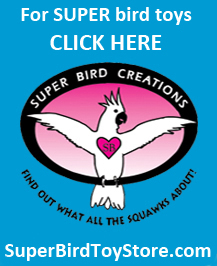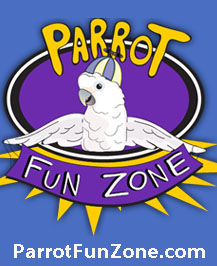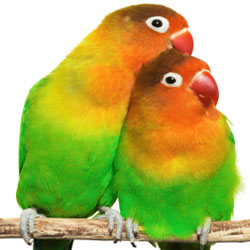 We all have preferences as to what household cleansers we use, what we use them for and how often we use them. Window cleaners, oven cleaners, furniture polish, drain cleaners, spot removers… the list goes on and on. The problem is that many of these “off the shelf” cleaning products contain caustic chemicals and fumes that can be harmful and potentially deadly to your bird (and your family too!)
We all have preferences as to what household cleansers we use, what we use them for and how often we use them. Window cleaners, oven cleaners, furniture polish, drain cleaners, spot removers… the list goes on and on. The problem is that many of these “off the shelf” cleaning products contain caustic chemicals and fumes that can be harmful and potentially deadly to your bird (and your family too!)
Just because cleaners are sold in the grocery store doesn’t mean they are safe. The components in many household cleaners are actually classified as hazardous waste. Over 100 chemicals commonly found in our homes have been linked to a wide range of medical issues such as allergies, asthma, headaches, chronic fatigue, nervous disorders and depression. Recent research found that the use of spray household cleaners could increase the risk of developing asthma by nearly 50 percent in humans. Just imagine the impact on our avian companions who have the most efficient respiratory systems in all of the animal kingdom. The result is that our birds are much more susceptible to airborne toxins.
Don’t worry, I’m not going to scare you with horror stories about what could happen to your bird. There are many stories on the internet of birds who have died or have become ill as the result of exposure to the chemicals and fumes from carpet, furniture, bathroom, glass and oven cleaners. Several products have been linked to bird deaths (Carpet Fresh, Fabreze, Scotchguard, Arm & Hammer Pet Fresh just to name a few). Instead, I want to share some safer cleansers alternatives that you can make in your own kitchen with everyday, inexpensive ingredients that can replace many of the store bought cleansers that we have all become too accustomed to using. These homemade cleansers are not just bird friendly, they are also environmentally and kid friendly too AND they are less expensive than store bought cleansers. Talk about a win-win situation!
I hope you’ll find this information helpful and useful to use in your own home and that you’ll share it with everyone you know, even if they don’t have birds!
Here are the most commonly used household cleansers that you can make right in your own kitchen and with products you probably already have on hand:
All Purpose Spray Cleaner
A combination of baking soda and water (when in doubt you can’t go wrong with this combo) is great for cleaning counter tops, floors and sinks. When you’re done cleaning, you can even pour the rest down your kitchen sink or garbage disposal to eliminate sink odors.
- ¼ cup baking soda
- 1 quart of water
Mix in a bucket or pour into a spray bottle.
Bathroom Cleaners
Forget Tilex or Mr. Clean, a borax mixture is a great safe alternative for cleaning bathrooms. Combine the following:
- 3-4 cups of hot water
- 2 tsp. Borax
- 4 Tbs. distilled white vinegar
- ¼ tsp. liquid soap
Mix well and pour in a spray bottle.
For tougher cleaning jobs, baking soda also makes a great soft scrub cleanser. Just add several drops of plain liquid soap to baking soda and mix thoroughly to create the paste that you can safely use to scrub your tub, tile and sink.
If mildew is a problem, straight vinegar reportedly kills 82% of molds. Spray the moldy area and let it sit. The smell of vinegar typically dissipates in a few hours but it can be an irritant. Be sure to close your bathroom door and leave the fan on to help remove the fumes.
Safety note: Never combine vinegar with household bleach. The fumes given off (chlorine gas) are toxic!
Drain Cleaners
For clogged or slow draining sinks and tubs:
- ½ cup baking soda
- ½ cup distilled white vinegar
- ½ cup table salt
Pour the mixture into the drain and let it stand for 15-20 minutes. Flush with BOILING water. Repeat as necessary to remove the clog.
Glass, Window & Mirror Cleaners
Toss out the Windex, here are two options for an all purpose glass cleaner.
Option 1
- 1 cup distilled white vinegar
- 1 gallon water
Put in a spray bottle
Option 2
- ½ tsp liquid soap
- 3 Tbs. distilled white vinegar
- 2 cups of water
Mix together and put in a spray bottle. Shake gently before each use.
Note: Option 2 is my favorite because it has the liquid soap in it and it cleans residue and greasy build up really well.
Oven Cleaner
Cover the bottom of your oven generously with water, then cover the oven bottom with enough baking soda that it is white. Spray more water over the baking soda. Let the treatment sit overnight to loosen the grease. In the morning, remove the excess baking soda and grease with a hot wet cloth and wipe down the inside of the oven with a wet and soapy sponge until all the greasy residue is gone.
Furniture Polish
- 1/2 cup distilled white vinegar or fresh lemon juice
- 1 tsp olive oil
Mix the ingredients in a glass jar. Apply sparingly with a clean soft cloth and buff to a shine. Cover the glass jar and store for future use.
Carpet Cleaners
For odor removal: sprinkle the affected area with baking soda, let stand for 15 minutes and vacuum thoroughly.
For stains: If you need to “shampoo” your carpet there are plant based cleaners you can buy (citrus based cleaners work best) or you can do it yourself by mixing grapefruit seed oil and water in your own shampooer using 12 drops of GSE per gallon of water.
Vinyl Floor Cleaners
For vinyl floors use a damp mop with the following mixture:
- ½ cup distilled white vinegar
- 1 gallon warm water
Disinfectants
Grapefruit Seed Extract is a natural disinfectant. Mix 20 drops of grapefruit seed extract into 2 quarts of water and pour it into a spray bottle to use on all surfaces you’d like to disinfect.
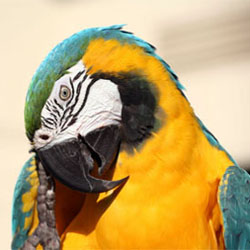 In the wild, a parrot's beak and nails are maintained naturally in the course of chewing, nut cracking, nest building, climbing, tearing apart fruits and vegetables, landing and walking on rough branches, and swiping beaks frequently on hard, rough surfaces. All this “parrot work” assists in manicuring their beaks and nails. Domestic parrots don't have as varied an environment or activity level. Therefore, some level of human intervention is required to achieve what is accomplished naturally by their wild counterparts.
In the wild, a parrot's beak and nails are maintained naturally in the course of chewing, nut cracking, nest building, climbing, tearing apart fruits and vegetables, landing and walking on rough branches, and swiping beaks frequently on hard, rough surfaces. All this “parrot work” assists in manicuring their beaks and nails. Domestic parrots don't have as varied an environment or activity level. Therefore, some level of human intervention is required to achieve what is accomplished naturally by their wild counterparts.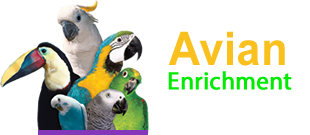

 Feathers are unique to birds and they are an elegant masterpiece of design. The three most prevalent categories of feathers, each of which serves a distinct purpose, are the:
Feathers are unique to birds and they are an elegant masterpiece of design. The three most prevalent categories of feathers, each of which serves a distinct purpose, are the: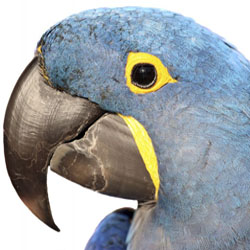 Parrots are termed hookbills due to the curved, hook-like shape of their beak. Finches and canaries with their short, straight beaks are considered softbills. The shape of a bird's beak determines the type of diet it can consume.
Parrots are termed hookbills due to the curved, hook-like shape of their beak. Finches and canaries with their short, straight beaks are considered softbills. The shape of a bird's beak determines the type of diet it can consume.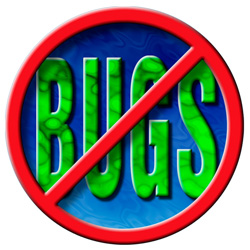 (Cue the horror music please!)
(Cue the horror music please!)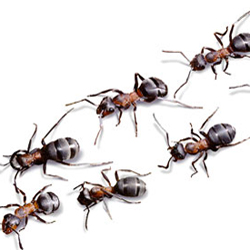 ANTS
ANTS MOSQUITOES
MOSQUITOES FRUIT FLIES
FRUIT FLIES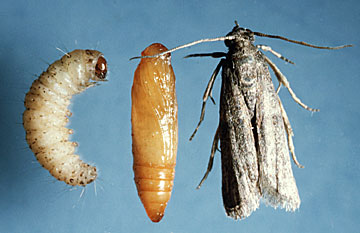 MOTHS
MOTHS Birds often have "accidents" on their toys and perches as well as intentionally goop them up with regurgitated food. Toys and other cage accessories that have been pooped on can harbor dangerous bacteria and pose a risk of infection to your bird. In our article
Birds often have "accidents" on their toys and perches as well as intentionally goop them up with regurgitated food. Toys and other cage accessories that have been pooped on can harbor dangerous bacteria and pose a risk of infection to your bird. In our article 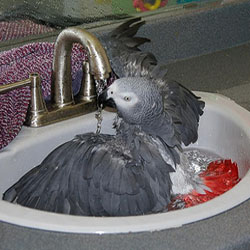 If you have a bird you will have feather dust in every nook and cranny of your home. It takes vigilance to keep up with it.
If you have a bird you will have feather dust in every nook and cranny of your home. It takes vigilance to keep up with it.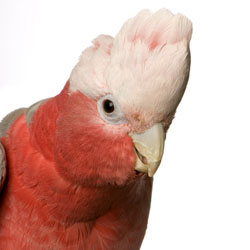 The use of disinfectants can assist in protecting our birds from bacterial, viral and parasitic diseases. These diseases can easily be spread between birds via dirty dishes, contaminated water supplies, used toys or cages, or contact with hands and clothing.
The use of disinfectants can assist in protecting our birds from bacterial, viral and parasitic diseases. These diseases can easily be spread between birds via dirty dishes, contaminated water supplies, used toys or cages, or contact with hands and clothing.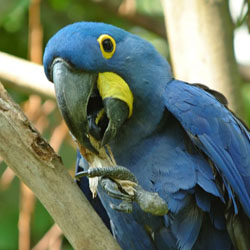 Grooming Your Bird's Nails
Grooming Your Bird's Nails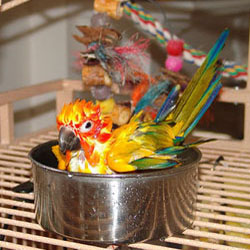
 In the wild, all birds bathe regularly to ensure their feathers are maintained in tip-top flight condition. Bathing stimulates preening which removes dirt, dander and unwanted visitors from feathers. Parrots have been observed getting their baths during rainstorms, splashing in puddles or streams, rubbing against leaves that condense moisture in the high humidity tropical environment and by taking dust baths when water is not plentiful.
In the wild, all birds bathe regularly to ensure their feathers are maintained in tip-top flight condition. Bathing stimulates preening which removes dirt, dander and unwanted visitors from feathers. Parrots have been observed getting their baths during rainstorms, splashing in puddles or streams, rubbing against leaves that condense moisture in the high humidity tropical environment and by taking dust baths when water is not plentiful.  We all have preferences as to what household cleansers we use, what we use them for and how often we use them. Window cleaners, oven cleaners, furniture polish, drain cleaners, spot removers… the list goes on and on. The problem is that many of these “off the shelf” cleaning products contain caustic chemicals and fumes that can be harmful and potentially deadly to your bird (and your family too!)
We all have preferences as to what household cleansers we use, what we use them for and how often we use them. Window cleaners, oven cleaners, furniture polish, drain cleaners, spot removers… the list goes on and on. The problem is that many of these “off the shelf” cleaning products contain caustic chemicals and fumes that can be harmful and potentially deadly to your bird (and your family too!)